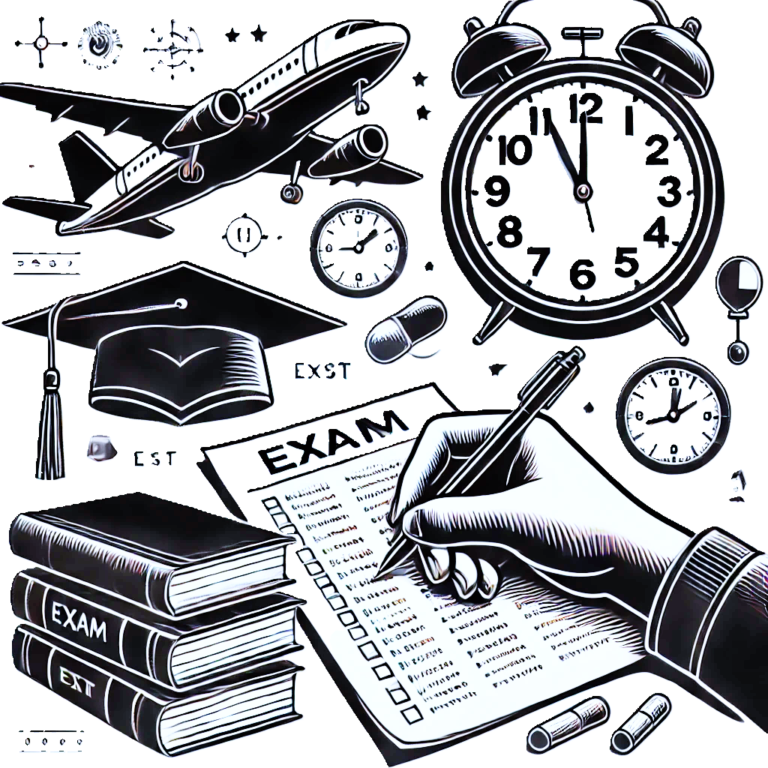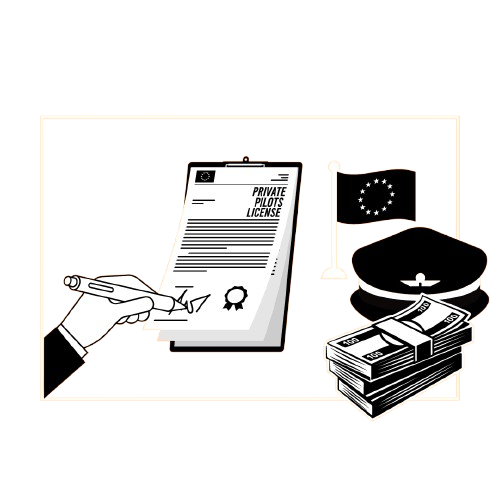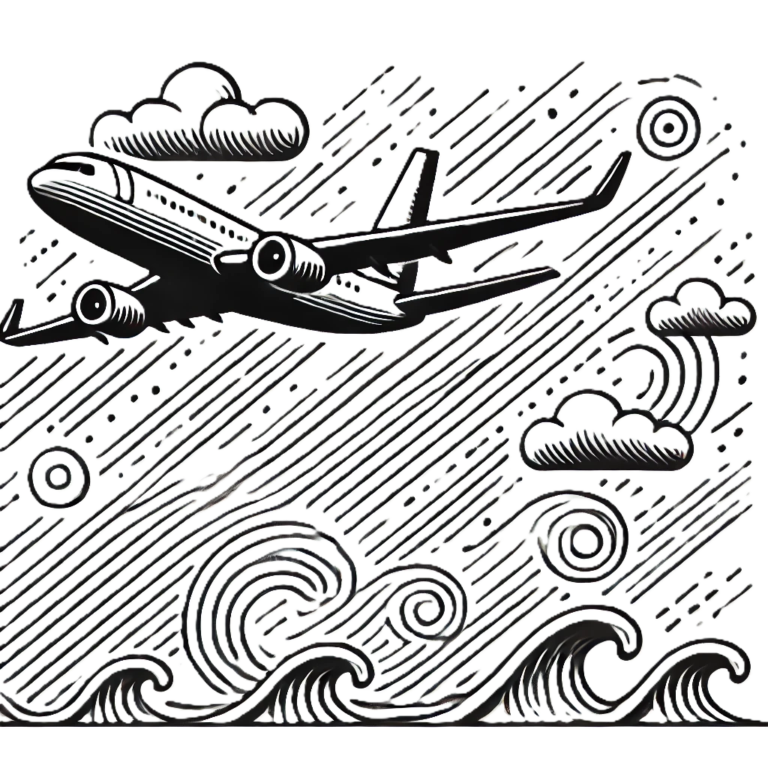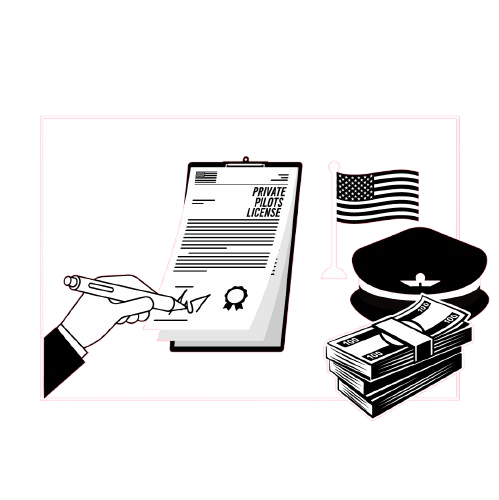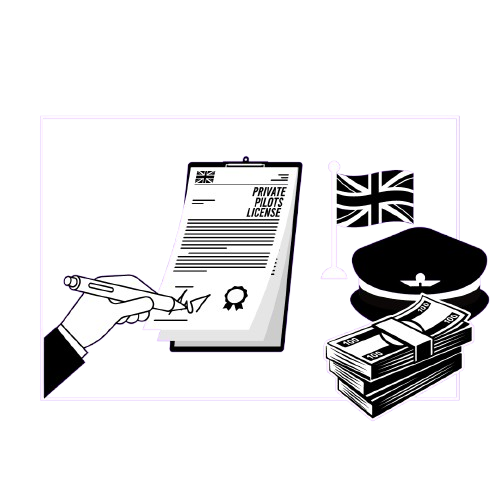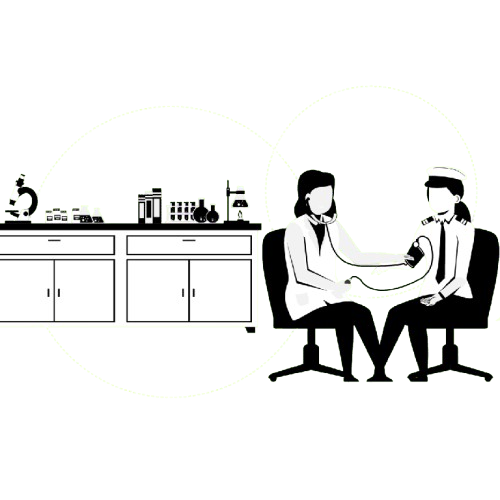Cost To Become A Pilot
Written By A Real Airline Pilot
10 min read
In this post, I want to honestly answer the question of ‘how much does it cost to become a pilot?’, mainly looking at the cost of becoming a commercial pilot.
If you’re interested in the cost of becoming a private pilot, you can read all about it in a previous blog post, where I break all of this down.
It Usually Costs Between $60,000-$100,000+ To Become A Pilot (the same in £ too).
However, this does depend on multiple factors, so keep reading for more.
Table Of Contents
- The Factors Impacting The Cost Of Becoming A Pilot
- The Future Of Pilot Training Costs
- Sponsored/Paid For Pilot Training
- The Different Costs Associated
- Integrated Scheme – More Expensive But Faster
- Modular Scheme – Cheaper But Longer
- Do You Need To Be Rich To Be A Pilot?
- Summary – How Much Does It Cost To Become A Pilot?
The Factors Impacting The Cost Of Becoming A Pilot
How much it costs to become a pilot depends on which training course a pilot completes.
The integrated pilot training is an ‘all in one’ package aiming to train a pilot in 18 months. However, this course is more expensive.
Or the Modular scheme, a cheaper ‘pay as you go’ method to pilot training.
Keep reading to read more about the different schemes.
It’s also worth noting that American pilots must complete 1500 hours before they are eligible to work for major airlines.
Most pilots work as instructors to acquire this experience and therefore get paid.
However, other pilots chose to pay for these additional flight hours, making the process quicker but more expensive.
This adds to the cost of pilot training.
It is no secret that becoming a commercial pilot costs a great deal of money.
It’s unfortunate how many people I meet confess, “I’ve always wanted to be a pilot”, but never pursued this fantastic career because of the price tag associated with entry into the industry.
The Future Of Pilot Training Costs
Some fantastic incentives have been made available by different schemes/FTOs.
The world is quickly heading towards a global pilot shortage. With this shortage, new schemes should open the door to those who can’t afford to hand over such a large amount of money for the conventional route.
Sadly, I’m not a financial advisor, and I will most likely be of little help regarding how to finance your training personally.
Know this; however, the total of my training costs (which I began in January 2014) was an unpalatable £130,000.
This figure included my living costs whilst completing the two-and-a-half-year process and a £30,000 additional cost that I paid to my first employer for a Type Rating.
You can do pilot training for cheaper than this cost!
Many pilots, myself included, enter the industry with substantial pilot loans hanging over our heads.
Most who borrowed money for the course, myself included again, will spend the first few years of their careers paying off these loans.
Luckily, the entry salary into an airline is very reasonable and continues to grow substantially in the early stages. You can read more about how much commercial pilots get paid.
Some Airlines Schemes Will Pay For Your Pilot Training!
We spoke about the MPL program in this guide and just what a fantastic program it is.
In the past, there have been several airline sponsorship schemes where airlines will pay for their cadet’s training and employ them directly once they complete the course!
With this, these courses are often highly competitive. In the past, airlines have offered their ‘future pilot’ schemes to just 20-40 individuals and received tens of thousands of applications.
However, it is worth applying for one of these schemes.
To have your training paid for and the guarantee of a job as a commercial pilot at the end of it, these schemes are fantastic, and hopefully, we will see more of them in the future.
I’m delighted to see a large international airline open up its sponsored training scheme.
TUI has opened up its pilot cadet program, which means cadets over 18 years old will now have the opportunity to embark on their MPL program!
I’m hopeful that as this shortage spreads worldwide, many airlines will be forced to open up their pilot cadet training scheme to train enough cadets to keep up with demand!
The Different Costs To Become A Pilot
To understand the above figure properly, we need to understand the different pilot training routes that will lead you to become an airline pilot.
To fly passengers for a major airline, you must complete enough flight time as a student pilot on single and multi-engine aircraft.
With this, you will need to complete your ground school knowledge tests with 14 ATPL exams, thus completing the flight school ground school phase.
From here, you will also need to complete your commercial pilot license and then achieve an instrument rating to upgrade this licence to an Airline Transport Pilot License.
Once you have completed these qualifications, you can then continue hour building.
This may be necessary for America, where you will need 1500 hours to fly for the major airlines.
Therefore, you can either become a certified flight instructor or work for a regional airline.
Cost To Become A Pilot – The Integrated Route
This is a ‘packaged’ training course that will take you from 0 hours to a frozen ATPL (Airline Transport Pilots Licence), the licence required for flying passengers as an airline pilot.
This is usually the quickest way to become an airline pilot and usually takes around 18 months. It usually includes everything, including accommodation, but won’t include your living expenses (food etc).
The cost to become a pilot on an Integrated Course is between $/£75,000 – $/£100,000, depending on the flight training organisation.
Average Cost To Become A Pilot – The Modular Route
This route is far more flexible and suits those who don’t necessarily have the time or money readily available for the Integrated route. It can be seen as a ‘pay-as-you-go’ method for receiving your commercial pilot’s licence.
You can read how Luke became a commercial airline pilot using the Modular pilot training route.
Becoming a pilot on a Modular Course costsbetween $/£50-$/£75,000, depending on the flight training organisation and the time you take to achieve your licence.
Do You Need To Be Rich To Be A Pilot?
Training organisations know just how expensive their pilot programs are; therefore, they will usually have a finance specialist available on the day to answer questions.
This is arguably one of your most significant assets regarding fact-finding regarding financing your pilot training. As well as this, you can also book a meeting at your local bank branch.
It’s worth noting, however, that some banks will be more helpful than others regarding this kind of funding.
Our pilot training class was made up of people from various financial backgrounds.
Some, like myself, were fresh out of school and didn’t have a penny to our name. Others had worked for many years and secured finances to help them pay for their training.
Many borrowed money using their parents’/other family members’ property as collateral (if their family members had enough equity in their property).
Some were very fortunate and had the ‘bank of Mum and Dad’ behind them to lend or gift them money.
I am trying to emphasise that you don’t need to be extremely wealthy to become a pilot; I certainly wasn’t. However, as it is with any case when it comes to borrowing money, there will need to be something to guarantee the loan against.
I appreciate this probably isn’t the answer you were hoping for regarding how to pay for pilot training.
However, I have provided you with some guidance on where to get the information required. Once again, everyone is unique regarding finances, so you must find the best route for you.
I strongly recommend talking to a finance specialist on an open day.
To Summarise – How Much Does It Cost To Become A Pilot?
Pilot training isn’t cheap, so the cost of becoming a pilot is high.
To land yourself a place as an airline pilot, you must spend at least $50,000/£50,000.
It all depends on the training scheme, the flight school and how quickly you want to complete your pilot training.


